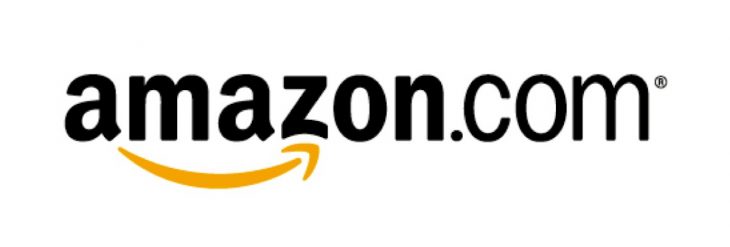Amazon gets OK to buy Whole Foods, Wal-Mart isn’t standing still
by August 24, 2017 9:29 pm 1,019 views

The Federal Trade Commission approved Amazon’s bid Wednesday, and Whole Foods shareholders also green-lighted the deal which is expected to close by the end of this year. The blockbuster news of Amazon’s move to buy Whole Foods for $13.7 billion briefly overshadowed the work at competitor Wal-Mart Stores to respond to fast-changing customer demands.
While there was some concern Amazon’s acquisition of Whole Foods would allow the Seattle-based tech company to hinder retail competition, the FTC ruled that the small market share of grocery would be in the neighborhood of 4% of a highly fragmented industry where the largest grocery store — Walmart U.S. — carries around 22% of the total share.
Deborah Weinswig, retail analyst with Fung Global Retail Tech, said the U.S. grocery market is worth about $600 billion and Amazon’s total grocery sales were $350 million in the first quarter of this year, which is annualized at about $1.4 billion. That is small potatoes compared to the $172 billion Walmart U.S. does in grocery annually. Weinswig said Whole Foods owns about 33% of the $47 billion organic food segment.
“We can only speculate regarding Amazon’s plans for combining the Whole Foods stores with its own AmazonFresh service, possibly using the stores as distribution hubs to expand its Prime Now service, and integrating the technology currently being tested in its Seattle Amazon Go store. However, the deal will surely intensify the competition for omnichannel offerings in the space, as the grocery incumbents will look to catch up to Amazon’s technological know-how and focus on speed,” she said.
On that June 16 day in which Amazon announced the plan to buy Whole Foods, Wal-Mart announced it had bought men’s apparel e-tailer Bonobos for $310 million. But the Bentonville-based retail giant didn’t stop there. It recently said its subsidiary Jet.com will begin carrying Bonobos and ModCloth apparel on its site. The day Whole Foods shareholders approved the Amazon deal, Wal-Mart announced its partnership with tech giant Google Express to make online grocery shopping easier for its customers who use voice activation through Google Home.
A FUTURE WITH GOOGLE
Retail watchers say the Amazon deal for Whole Foods is good for its grocery business, and the same could be true for the Wal-Mart and Google partnership, which is expected to compete head-to-head with Amazon’s voice-activated platform. Kenji Gjovig, vice president with Content Analytics, told Talk Business & Politics the Wal-Mart partnership with Google makes a lot of sense.
“Amazon’s Echo (with Alexa) is the market leader in voice. No one (Amazon included) knows exactly what voice shopping will look like over the next several years but everyone knows it is a major frontier. It’s very smart for Walmart to bring its retail and eCommerce prowess to bear with Google’s strength in technology and smart home devices (Google Home, Nest, etc). I am very interested to see what comes from this,” Gjovig said.
Clint Lazenby, founder of #OnShelf, told Talk Business & Politics, the Whole Foods play was about getting Amazon refrigerated locations in 460 markets where it already has a high penetration of Amazon Prime members. These markets in many respects don’t overlap with Wal-Mart’s 4,700 stores located within 10 miles of 90% of the U.S. population.
Lazenby also said the Wal-Mart partnership with Google has the potential for some real upside with limited downside risks.
“Amazon’s deft strategy of owning search for consumer product research, consumers further confidence for product reviews and the more recent focus on improving review quality has created a wide moat for Amazon,” Lazenby said. “Wal-Mart is smart to partner with Google in this area.”
He said ultimately this success created a real need for Google and Wal-Mart to partner in a way that leverages their respective capabilities.
“The real value here, in my, view is where this partnership can go in the future, more so than the announcement,” Lazenby added.
OTHER TECH MOVES
Since June 16, Walmart U.S. has also rolled out online grocery pick up in more locations totaling around 1,000 at this juncture. It has also expanded the pickup towers into 100 stores to make the pickup of general merchandise easier.
On the technology front the retailer also launched a competition in its Store No. 8 to glean access to innovations around virtual reality. The retailer also said it was using machine learning to price goods online and the use of drones to take inventory in stores and warehouses continues to be tested.
Jet.com also launched a try-before-you-buy service for its customers. In merchandising Wal-Mart partnered with fashion model Joan Smalls to try and breathe some new life into its apparel lines and the retailer is reportedly in talks with Birchbox, along with other retailers, as the subscription-based beauty box company is looking to sell.
Edward Yruma, retail analyst with KeyBanc Capital Markets, said the race to win in e-commerce has two lead horses – Amazon and Wal-Mart. Budd Bugatch, analyst with Raymond James & Associates, said Wal-Mart is also out front in the omnichannel retail game given its vast store presence and growing online expertise. That’s where he believes retail is going in the near-term.
